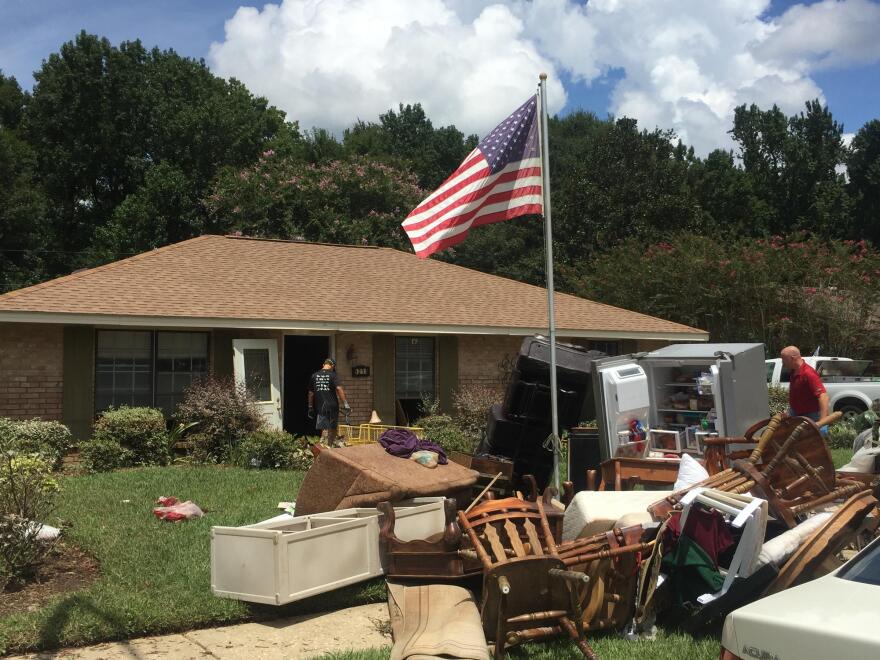Louisianans have a love-hate relationship with water.
Our state's waterways are the source of so much of our culture and commerce. But as rainfall increases and storms intensify, once historic flooding events are becoming commonplace.
Elected officials across the state are exploring new policies to combat urban and river flooding.
Among them is this week's guest on Capitol Access, East Baton Rouge Parish Mayor-President Sharon Weston Broome.
Q: You talked about this issue at the U.S. Conference of Mayors last month. There you said, "We can no longer think myopically. When you live in a community where water is a way of life, you have to think about water management in everything that you do."
What are some of the ways you've woven flood control into other projects, specifically your MOVEBR infrastructure plan?
Well, when we started our move EBR plan, first of all, we recognize that it was an, is a great opportunity for transformation, uh, for our city and parish in a lot of different ways. Certainly with transportation, roads, etc. We also recognize that we have to think with a 21st-century mindset, if you will. That means that we have to think about water. We have started to look at various projects where we can implement a green infrastructure, for example permeable surfaces or rain gardens or biowells.
Q: You promised to decrease the flood risk for every resident of East Baton Rouge Parish, in some way, by 2025. Green infrastructure can help with that, but it's certainly not enough to get you all the way there. What are some of the other efforts needed to close that gap?
Well, look, that was a, that was a bold statement that I made, but I need to add some clarification. Yes, for some of our residents, we estimate the reduction in flood potential to be as great as two feet. Not every home in Baton Rouge, in East Baton Rouge Parish, will be impacted by this because some of them don't need that.
There are two major projects that should be completed by 2025 that's going to help us accomplish that goal. That would be the Comite River Diversion Canal and the Five Tributaries Project. The effect will be to speed up the time water drains in our parish, while at the same time not affecting our neighbors downstream.
Q: And that leads perfectly into our next discussion. Floodwater doesn't follow political boundaries. So what are some efforts that the city-parish [government] is making to coordinate with governments upstream and downstream to ensure that one community's benefit isn't putting another at risk?
Well, you're absolutely right. Water doesn't know East Baton Rouge Parish from Livingston Parish, from Ascension Parish. It just flows, right? And so, what we try to do is be communicative to our surrounding parishes on what we do.
Q: You talk about communication being key, and there are a couple of initiatives that would formalize some of those lines of communication...
Yes, the state is developing a statewide Watershed Initiative. Water indeed has no boundaries. And so, The Watershed Initiative hopes to create cooperation among communities in individual watersheds so that we're working together in a uniform effort in our water management.
Our water management efforts, for example, in The Watershed Initiative will include areas of retention, [so] projects that take place in the East Baton Rouge parish won't impact our neighbors next door and Ascension and vice versa. So that's what The Watershed Initiative allows — a great conduit for us to manage water regionally.



